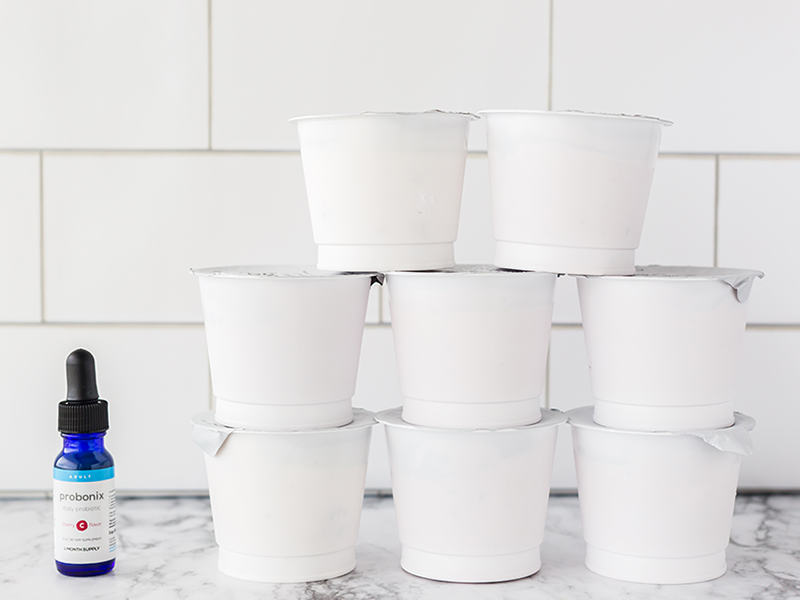
Short answer? It depends. Yogurt can be a great natural source of probiotics if you are willing to adhere to some very specific criteria, but most people don’t eat the right kinds of yogurt or the right amounts of yogurt to meet the needs of their bodies. While it is certainly possible to nourish your body with probiotics by consuming yogurt alone, it can be both difficult and ineffective to do so on a consistent basis. Probonix can be a great complement to regular yogurt consumption. Let’s go over some of the reasons why.
Convenience
Yogurt has a short shelf life. This means you must buy it regularly, but it also means that you’re getting it fresh. As long as you consume it before the expiration date, the active daily cultures in yogurt should still be alive when you eat it. Probonix has very long shelf life. When you don’t have any fresh yogurt in the refrigerator, Probonix will be waiting for you on the counter.
Yogurt requires refrigeration. It is a dairy product with live and active cultures. Refrigeration is required in order to slow down the metabolism of these active bacteria and prolong their lives until the expiration date. This means yogurt can be difficult to fit into your diet when you’re on the move. When you’re out for the day, throw Probonix in your bag for your daily probiotic fix.
Limited selection
Yogurt with active probiotics must say “live active cultures” on the label. Most yogurts are made from pasteurized milk, meaning the milk is heated to very high. This is fine because the bacteria are typically not added until the milk has been cooled. If the packaging doesn’t specifically indicate that it contains live and active cultures, it should be disregarded as a potential probiotic source, as it suggests that the yogurt has been heat-treated after the bacteria has been added. This will kill the healthy bacteria and render them completely ineffective. Be sure that the yogurt you’re buying says “live and active cultures” somewhere on the package.
Yogurt sweetened with sugar may taste better, but it can make sugary yogurts less reliable sources for probiotics. Probiotics feed off of sugar. This hastens their metabolism and causes them to die before they would without sugar present. This means that sugary yogurts can often have less live and active bacteria than their sugar-free counterparts. They are also less healthy food choices in general. If you want to sweeten your yogurt, do so as you’re preparing to eat it with stevia, honey, fruit, nuts, or granola.
Effectiveness
Yogurt typically has fewer strains than Probonix. It is important to supply the gut with a variety of healthy bacterial strains in order to promote diversity and provide a spectrum of benefits. While most yogurt brands contain anywhere from 3-7 strains of bacteria, Probonix has 12.
Perhaps most importantly, yogurt bacteria have little protection against stomach acid. Some strains of bacteria common in yogurt operate at lower pH levels (around 4-5). This gives them a better chance at survival through the stomach acid than other bacteria, but they are still not protected by anything like the acid coating in Probonix. Much like probiotic pills without added protection, a very large percentage die before reaching the small intestine.
So in summary, yogurt can indeed be a good source of probiotics if you buy the right brands and eat it regularly. An ideal yogurt has the “live and active cultures” label, contains multiple beneficial bacterial strains, and is sugar-free. However, it is wise to supplement even an ideal yogurt with Probonix in order to guarantee a sufficient number of probiotics make it alive to the stomach, and in order to provide the gut with a diverse selection of probiotic bacteria.
